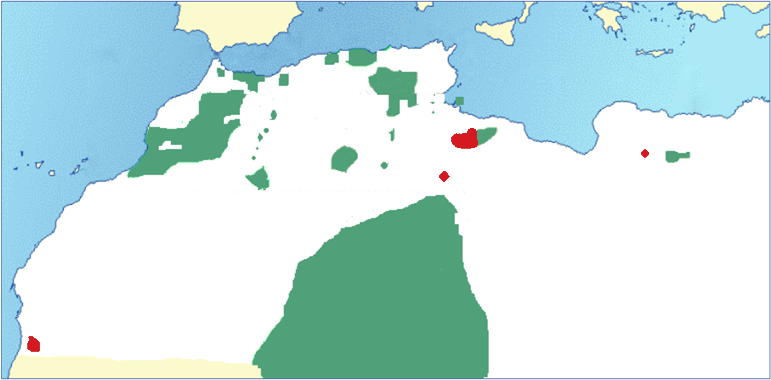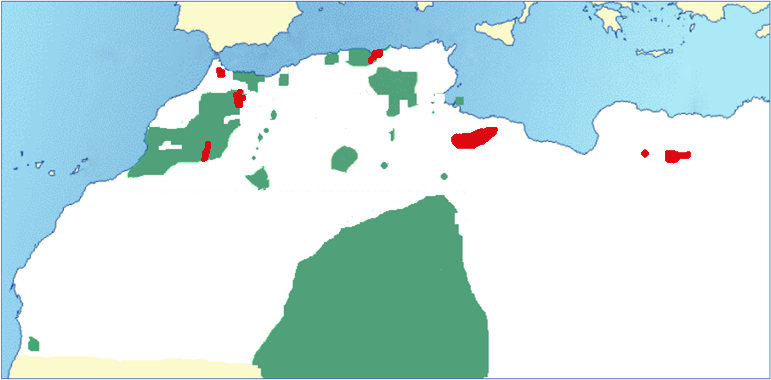Authors Maarten Kossmann
7 days
30 days
All time
Recent
Popular
Amazigh (Berber) languages are quite close to each other and in most places nearby varieties are mutually intelligible. They function like a discontinuous dialect continuum.
A loooong thread with maps (and no memes☹️).
So can we do sub-classification?
Many people say “no”, like André Basset’s famous quote: “cette langue s’éparpille directement ou à peu près en une poussière de parlers de 4 à 5 mille peut être” (1952:1) and Alfred Willms (1980). Others are a bit more nuanced.
For example, the fantastic studies by Lafkioui (https://t.co/hHKMgEPjK2) give a synchronic classification of Tarifiyt dialects. To cut a very long story irresponsibly short: all variables are counted the same.
However, we should ask ourselves: Does this continuum hide a more discontinuous past? Has there never been major disruption, or has much of it been smoothed out by later convergence?
In order to study this, one has to classify variables and their isoglosses. Some variables are continuous and can be assigned to the latest convergence period. Others are clustered in a group unrelated to the continuum. Still others are scattered.
A loooong thread with maps (and no memes☹️).
So can we do sub-classification?
Many people say “no”, like André Basset’s famous quote: “cette langue s’éparpille directement ou à peu près en une poussière de parlers de 4 à 5 mille peut être” (1952:1) and Alfred Willms (1980). Others are a bit more nuanced.
For example, the fantastic studies by Lafkioui (https://t.co/hHKMgEPjK2) give a synchronic classification of Tarifiyt dialects. To cut a very long story irresponsibly short: all variables are counted the same.
However, we should ask ourselves: Does this continuum hide a more discontinuous past? Has there never been major disruption, or has much of it been smoothed out by later convergence?
In order to study this, one has to classify variables and their isoglosses. Some variables are continuous and can be assigned to the latest convergence period. Others are clustered in a group unrelated to the continuum. Still others are scattered.
Now what about scattered variables? Some of them look very old and thus kind of put our basic ideas of continuity and large-group classifications in question.
Let’s take a look at a couple of them and shiver at their
(1) The 2SG subject marker on the verb.
GREEN: -d
YELLOW -t (possibly a development from -d)
ReRED: -ḍ / -ṭ
There is no regular phonetic correspondence of -d to -ḍ.

(2) In most varieties *β became (or remained?) /b/ in pre-consonantal position (GREEN). In a number of varieties, this didn’t happen (RED).

(3) The Imperative M:PL suffix is -at in western Morocco AND in Awjila (Libya) (RED). It is -ət / -ăt elsewhere (GREEN). The yellow part has different suffixes.

(4) The pharyngealized (“emphatic”) non-geminated alveolar is [dˁ] (or [ðˁ]) in most of Amazigh (GREEN), but in a scattered number of varieties, it is [tˁ] (RED).

Let’s take a look at a couple of them and shiver at their
Amazigh (Berber) languages are quite close to each other and in most places nearby varieties are mutually intelligible. They function like a discontinuous dialect continuum.
— Maarten Kossmann (@ait_kisou) January 12, 2021
A loooong thread with maps (and no memes\u2639\ufe0f).
(1) The 2SG subject marker on the verb.
GREEN: -d
YELLOW -t (possibly a development from -d)
ReRED: -ḍ / -ṭ
There is no regular phonetic correspondence of -d to -ḍ.

(2) In most varieties *β became (or remained?) /b/ in pre-consonantal position (GREEN). In a number of varieties, this didn’t happen (RED).

(3) The Imperative M:PL suffix is -at in western Morocco AND in Awjila (Libya) (RED). It is -ət / -ăt elsewhere (GREEN). The yellow part has different suffixes.

(4) The pharyngealized (“emphatic”) non-geminated alveolar is [dˁ] (or [ðˁ]) in most of Amazigh (GREEN), but in a scattered number of varieties, it is [tˁ] (RED).

